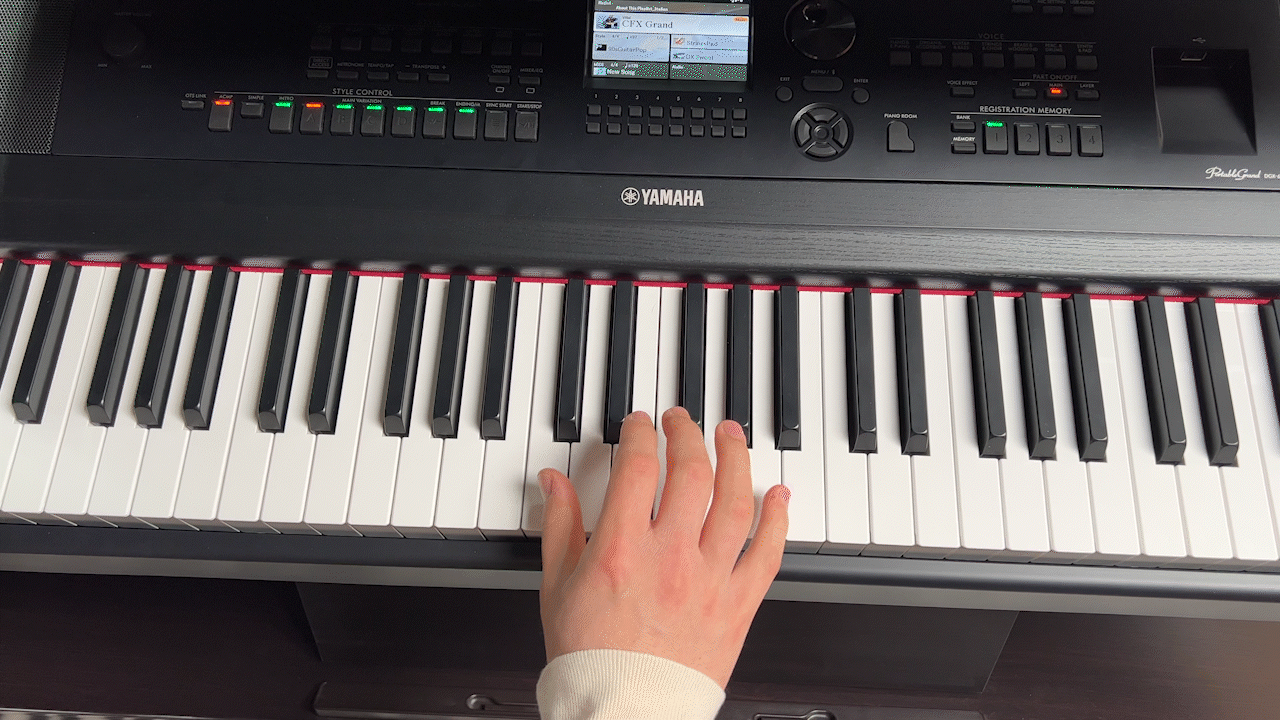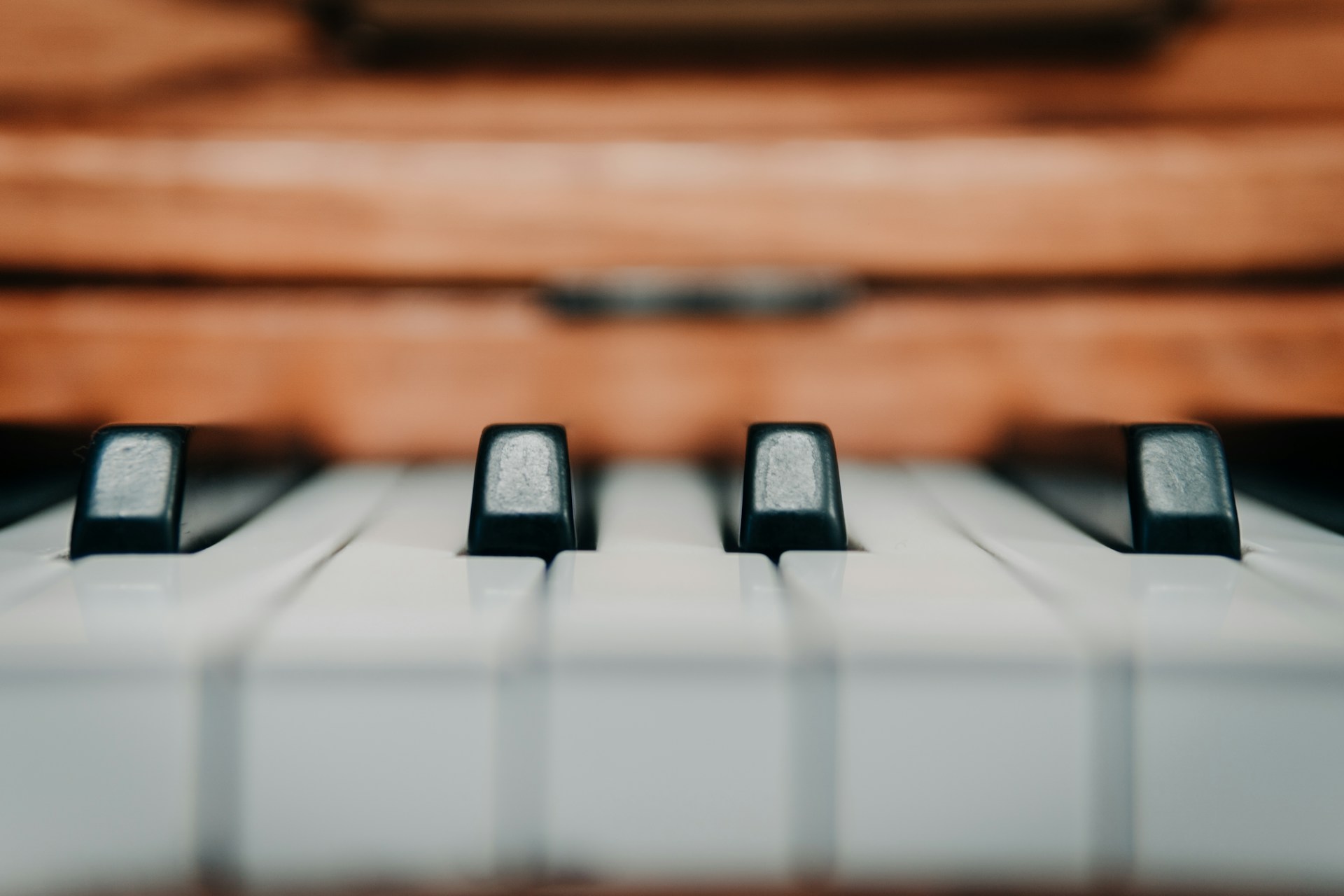Learning to play the piano is indeed a wonderful endeavor, whether it's for personal pleasure or for professional aspirations. If you're wondering where to start, fear not! In this article, we'll walk you through a comprehensive, step-by-step guide on how to begin your piano journey from scratch. We'll delve into fundamental techniques, theory essentials, practice exercises, and even offer recommendations for teaching resources and materials. So, keep reading, and prepare to embark on a fulfilling musical journey!
Basic Piano Techniques
When starting to learn to play the piano, it's important to have basic techniques in place. Place your fingers correctly on the piano and learn chords and keys to build your foundation. Using sustain and other pedals will also help you create more depth in your piano playing.
Anatomy of a Piano
The keys on a piano serve different functions, and it's important to understand each one. The white keys represent the natural tones, while the black keys represent sharp or flat tones. The range of keys can vary from as few as under 30 to as many as 88 keys depending on your needs and the level you want to play at. It's important for both children and adults to learn proper finger positioning to avoid injuries in the long run.
Placement of Fingers on the Piano
When placing fingers on the piano, it's important to have a correct sitting position. Right hand techniques and left hand techniques can also play a role in your performance.

When practicing chords, your fingers should lightly rest on the keys. It's also important to avoid unnecessary movements during play for better control over the thumb as well as building speed and accuracy.
Chords and Keys
For beginners, learning basic chords on the piano can be challenging. But with practice and patience, you will master these chords and be able to play music. Introduction to different keys is also important for a better understanding of music theory and how to play songs correctly. You can, for instance, delve into theoretical models like the circle of fifths. It can be a great help in understanding which chords harmonize together within a certain key. Additionally, it would be beneficial to learn music scales, such as the C Major scale. Starting from a scale and learning to play it without hesitation can develop your skills to transpose your chords to another key, such as from C Major to F Major. Parents who want to teach their children piano can consider online resources like Flowkey or find a good teacher for instruction in finger technique and quick chord changes.

Sustain and Other Pedals
Sustain and other pedals are important techniques when learning to play the piano. The sustain pedal is used to prolong the sound of chords or individual notes, while the sostenuto pedal is often used in classical music to sustain the tone of specific notes. The differences between damper and soft pedals include how they affect the sound and how much sustain they provide.
Timing is everything when it comes to the sustain pedal. Press the pedal after playing a chord, and release your hand while the pedal is still down. When the next note is ready to be played, press the key, release the pedal, and press the pedal again before lifting your finger. This may sound quite complex. To some extent, it is, but once you've got the timing, your playing becomes much less muddy. Try all of this very slowly, and you'll hear the smooth transition between notes and chords without bleeding between each one.
Music notation and basic rhythms
Note diagrams are an important part of learning to play the piano. They show you where to place your fingers on the keys and which note to play. Basic time signatures like quarter notes and half notes are also important for achieving good timing in your playing. Time signatures help determine the rhythm in a piece of music. If you want more help with note reading and basic time signatures, online resources like Flowkey can be useful for both children and parents.
Remember, when practicing note reading and basic time signatures, it takes time to get the technique right – so time and patience are necessary. Another way to improve is by practicing chords while practicing notes - this will allow for faster progress.
Check out our selection of keyboard instruments.
Under this section, you can learn all about music theory for the piano, including an introduction to musical concepts, understanding intervals and chords, and how to apply music theory to improve your playing. With this knowledge, you will be able to develop a deeper understanding of the instrument and create more complex melodies.
The theoretical aspects of music can sometimes seem overwhelming, but with our guide and examples of practical exercises, it will be easier to acquire the necessary knowledge. This way, you will build a strong foundation as a pianist and give yourself the opportunity to express your creativity through the instrument.
Music Theory for Piano
Notes are an essential part of learning to play the piano. When you learn how to read music notes, it will make it easier for you to find the right keys on the piano. Time signatures and rhythms help build the tempo of the music, while scales and keys give you a basic understanding of the fundamental structure of music.
Introduction to Musical Concepts
Dynamics, tempo, and articulation are important musical concepts to understand when learning to play the piano. Dynamics refer to the difference in volume between loud and soft tones. Forte means loud, while piano means soft. Tempo indicates the speed of the music and can range from slow (adagio) to fast (allegro). Articulation refers to the way the notes are played - staccato means short and detached, while legato indicates a smoother transition between notes. Understanding these basic terms will help you better follow the notes and compose music yourself.
Understanding Intervals and Chords
Intervals define the distance between two notes and can be used to build chords. Different types of chords typically include major and minor chords. By using music theory, you can construct different types of chords using intervals and thus improve your piano playing.
Applying Music Theory to Improve Your Playing
The first thing to start with is scales. It's best to begin with the C Major scale as it's the easiest for beginners since it includes all the white keys, so the black keys are not involved, allowing for more focus on learning. Then, it would be beneficial to make use of the theoretical model, the circle of fifths, which can explain which chords are within, for example, the C Major scale. The circle of fifths shows, among other things, which parallel key (such as A minor) fits with, for example, the C Major chord.
Additionally, you can practice finger placement with exercises like scales to improve your piano playing. You can also learn arpeggios, which can provide a unique sound expression. Arpeggio is an Italian music term meaning "broken chord," i.e., the notes in the chord should be played consecutively at self-chosen tempos. For example, if you have a C Major chord consisting of the notes C, E, and G, they should be played quickly or slowly one after the other, depending on the tempo you choose. You may want to play the notes at 1/4 tempo or 1/8, depending on how it should be expressed with your accompanying chords. Through repetition and practice with exercises like scales, you can strengthen your finger placement and technique on the piano.
Check out our wide range of MIDI keyboards and synthesizers.
Piano Songs and Exercises
When learning to play the piano, it's good to have some songs, perhaps some of your favorite songs, that you can practice. However, make sure to choose songs that suit your level and challenge your skills. Additionally, exercises are important for improving your technique and finger strength. Try different exercises such as scales, chords, and arpeggios to develop your abilities.
Once you have mastered the basic techniques, you should also practice rhythms and timing. This can be done using a metronome or backing tracks. Also, remember to gradually build your repertoire of songs over time as you develop as a pianist.
The best songs to learn on the piano
Popular songs from the past decade:
- "Someone Like You" by Adele
- "Stay With Me" by Sam Smith
- "All of Me" by John Legend
- “Thinking Out Loud” by Ed Sheeran
- “The Scientist” by Coldplay
Classic hits by iconic artists:
- “Hey Jude” by The Beatles
- "Imagine" by John Lennon
- “Lean On Me” by Bill Withers
- “Bridge Over Troubled Water” by Simon & Garfunkel
Modern music with simple chords:
"Let Her Go" by Passenger
“Happy” by Pharrell Williams
Learning songs on the piano can be a fun and rewarding way to practice. Popular songs from the past decade like Adele's 'Someone Like You' or classic hits like The Beatles’ 'Hey Jude' are great choices for beginners as they have simple melodies and easy chord progressions. Another option is modern music with simple chords, like Passenger's 'Let Her Go' or Pharrell Williams' 'Happy'. These songs allow you to master basic techniques and gain more confidence in your piano skills.
Exercises to Improve Your Fingers and Technique
Scale exercises for beginners can help you build finger strength and agility. Try these exercises:
- Finger trills: Tap repeatedly on a key with each finger while resting your other fingers on the table.
- Scales: Practice playing whole or half-tone scales from the bottom to the top of the piano.
- Crossing fingers (right hand): Cross finger 1 (thumb) over finger 3 (middle finger) as you move up a particular scale. When moving down, cross your third finger (middle finger) over your first finger (thumb).

Arpeggios and tremolo techniques can help you develop faster precision and control. Try these exercises:
- Arpeggio work: Play arpeggio chords (three piano strings at a time) from different keys.
- Tremolo repetitions: Repeat the same note several times in a row to work on quick movements.
Focus on hand position, posture, and downtime is important for any beginner. Here are some tips:
- Keep your hands slightly bent at the knuckles.
- Sit upright with a reasonably vertical back while playing.
- Allow some time between the notes (downtime) to avoid muddiness.
- Training rhythms and timing
Using a metronome to practice timing at different tempos can help improve your rhythm and musicality. It's also important to practice different beat variations, such as eighth notes and sixteenth notes, as this will provide a more complex playing experience. Also, try accompaniments with different tempos to challenge yourself and further develop your skills.
Building your repertoire of songs
Old genres like jazz or blues can be a good way to expand your repertoire of songs. You can also learn songwriting techniques to create your own compositions and practice the "Fake book" system for faster reading of piano notes. This way, you'll be able to impress your friends and family with your versatility as a pianist.
See our wide selection of keyboard stands, piano benches, and bags for keyboards.
Piano teaching and resources
Learn to play the piano in different ways and find the right teacher or online resource. There are many online courses that can help you learn to play the piano from scratch, and we've selected the best ones for you.
Different ways to learn to play the piano
Learning to play the piano can be done in different ways. You can choose self-study through online resources, traditional teaching with a piano teacher, or combine both methods for optimal learning. Online resources like YouTube tutorials and virtual piano teaching sites are easily accessible and budget-friendly options for those who want to learn at their own pace. Traditional lessons with a teacher provide structure and personal feedback on your technique and progress. A combination of both methods creates the perfect balance between self-study freedom and guidance from an experienced teacher.
Find the right teacher or online resource
When you want to learn to play the piano, it's important to find the right teacher or online resource. Different online courses and platforms can be a good starting point, so research your options in advance. Also, ask other music enthusiasts for recommendations and book trial lessons to test the provider's teaching style and level.
Recommendations for the best online courses and resources
Online platform flowkey.com, YouTube channel 'PianoTV' are some of the best online courses and resources for learning to play the piano. Flowkey offers interactive lessons with songs in all genres as well as feedback on your performance. PianoTV provides access to a wide range of tutorials on techniques, music theory, and repertoire for both beginners and more advanced players.
Check out our wide selection of electric piano stands.
Practical tips for learning to play the piano
When starting to learn to play the piano, it's important to structure your practice and teaching. Plan an appropriate amount of practice time each day and focus on the basic techniques first. Also, make sure to have a teacher who suits your needs.
To make the most of your practice time, divide the exercises into smaller parts and use repetition as a method. It will help you with both the technique and muscle memory. Also, remember that it's normal to make mistakes - try not to get frustrated with them, but instead take them as part of the process of learning a new instrument.
Structuring practice and teaching
To structure your practice and teaching as best as possible, it's important to choose the right teaching method and divide the training into small parts. Start with the basic techniques first, as these will be the foundation of your play.
When dividing the training into small parts, you can focus on one thing at a time, making it easier for you to learn and remember the techniques. It's also important to have realistic goals for each part of the training.
Focus on basic techniques like finger positions and chords first before moving on to more advanced exercises or songs. This will give you a good stable base to build on and increase the chance of successful learning of piano playing from scratch.
Make the most of training time
Make sure you have the right equipment to practice and avoid unnecessary interruptions. Try different music genres to keep your motivation up so you don't get bored during training. Set goals for each session so you can see your progress and know what to focus on for the day's training. This way, you make the most of your training time and reach your learning goals faster.
Avoid getting frustrated and stuck
When learning to play the piano, it's important to remember to take breaks during practice. This will prevent mental and physical overexertion. Also, accept your mistakes as a natural part of the learning process, and find a good balance between fun and seriousness in your practice. This way, you can avoid frustration and getting stuck so you can continue learning and developing.
Conclusion and recommendations for learning piano from scratch
Learning to play the piano can be a challenging but also very rewarding experience. By following the basic techniques, understanding music theory, and practicing songs and exercises, you will be able to improve your play and build a strong repertoire. It's also important to remember to take breaks and avoid frustration so you can maintain motivation and continue learning and developing as
a musician.
There are many different ways to learn to play the piano, and it's important to find the method that best suits your needs.
Remember that learning piano takes time and requires hard work and dedication. With the right techniques and exercises, however, you can achieve great success and joy in playing this beautiful instrument. So take the first step today and start your journey to becoming a skilled pianist!
Also, check out our article on piano school with Mogens Balle!





→ Back to our Information Center ←
Terms and conditions for private clients
Click here to see our terms and conditions for business clients
Music Group Denmark A/S and this e-commerce shop will be referred to as "seller, us, we, our, the webshop", while the client purchasing a product from Music Group Denmark A/S will be referred to as "buyer, client, customer, you, your, yours”.
Address:
Music Group Denmark A/S
Norddigesvej 4
DK-8240 Risskov
DENMARK
info@soundstorexl.com
Tel. +45 70273041
Private company
VAT: DK-33777175
Year of establishment: 2011
Delivery
The delivery costs depend on the size and weight of the order as well as the address and country of its destination. Please visit our Information Center for an updated country-specific price list. We reserve the right to charge the actual shipping price in case of goods exceeding the carriers' standard size and weight restrictions. We will inform the customer about this before the order is completed.
You have the option to enter an alternate shipping address, e.g. your workplace, when placing the order.
The sender of the package will be our logistics provider Online Distribution.
Please note:
When you order goods for private delivery, the order can be delivered by one or more carriers due to the fact that our suppliers use different freight companies. Packages will be handled according to the company’s method of conveyance.
You can find a list of our carriers in our Information Center. If you would like to know who will be delivering your order, in most cases you can find the information on Your Account. If this is not stated, please feel free to contact us.
Payment
In our e-commerce store you can pay with the following means of payment:
Credit cards
MasterCard
MasterCard Debit
Maestro
Visa
Visa Electron
The amount will not be drawn until we ship your order and we cannot draw a larger sum than the one you approved at the time of purchase.
Bank transfer
Please transfer the total order amount (including the delivery fee) to our bank Spar Nord Bank A/S:
BIC/Swift code: SPNODK22
IBAN: DK2290041120451932
We will charge no fees for banktransfers.
Gift certificate
Please note that you can only use one gift certificate per order.
For information on other country-specific means of payment, please click here.
When we have received the payment, we will ship your order immediately.
Prices
We reserve the right to cancel an order due to incorrect pricing in our e-commerce store (this might occur due to automatically calculated prices). The automatically generated confirmation, you will receive upon placing your order, is thus simply a copy of the online shopping cart - not our final order confirmation.
It is possible for you to view your previous orders in our online shop (starting from when you created a login with us). After logging on you can print your invoices etc.
Please note that both Danish and international private clients will be charged VAT according to Danish legislation.
Terms and conditions for discount codes and gift certificates
Unless stated otherwise, the following terms apply to the use of discount codes when placing a regular order (not applicable to individually prepared offers).
1. A discount code can only be used once per customer per day.
2. You cannot use more than one discount code per order.
A gift certificate is considered a deposit, not a product purchase. A gift certificate cannot be used as payment for a new one.
Right of return/cancellation
When shopping with us, you have 30 days right of cancellation. It expires 30 days after you:
When returning a product to us, please download our return form, fill it in and include it in the package.
Please note that some goods cannot be returned as normal cargo due to their size (this usually applies to goods over 30 kg or 2 meters in length).
You cannot cancel an order just by refusing to accept delivery without specifically letting us know.
Goods not included in the right of return/cancellation
We do not accept the return of demos and goods that have been made or ordered specifically for you (e.g. items that have been shortened according to your instructions or custom-made items). Furthermore, we do not accept the return of certain product categories, as it is impossible to assess the extent to which they have been used: pickups, pickup needles, bulbs, liquids, paint etc.
Return policy
Please use this return address:
Music Group Denmark A/S
Norddigesvej 4, Gate 6
DK-8240 Risskov
DENMARK
Please note that it is not possible to send us the goods COD.
We only accept products returned in their original packaging and only if the included software is not enabled. This means that when we receive the returned products, they must always be in minimum the same condition as when we shipped them. Therefore we kindly ask you to make sure that the item is properly wrapped. Since you are responsible for the goods until we receive them, we encourage you to keep your track and trace number from the carrier.
Please include a copy of the order confirmation or other documentation for your purchase when returning the item to us.
Please note that you are responsible for covering the shipping costs when returning a product to us.
In cases where the right of cancellation is used, we refund your purchasing price plus the delivery costs (if you had any when the goods were delivered to you) as soon as possible (and no later than 30 days from the day we received notification of your decision to cancel the order).
Please note regarding returned goods:
We always check goods returned to us, and you might lose your payment in part or in full. This happens if a product has been damaged or its value has been reduced. Among other things this could be the case for one of the following reasons:
Refund:
We make the refund with the same means of payment that you used for the original transaction unless we have explicitly agreed otherwise. If you paid with credit card, we will transfer the money back to the same card.
We can withhold the payment until we have received the returned item from you (unless you have submitted documentation for returning it). We refund the amount that you paid for the goods as soon as possible (and no later than 30 days from the day we received notification of your decision to cancel the order).
Read more about the cancellation of orders paid with MasterCard and Visa Card.
If the product is faulty (right of complaint)
When you shop in our e-commerce store you are protected by Danish legislation offering a high level of consumer protection. You have 12 months warranty and 12 months right of complaint which allows you to submit a complaint about errors or omissions that existed when the item was sold.
We do not provide support or warranty on free software (e.g. a trial or limited edition). The manufacturer provides the software support.
It is a requirement that the complaint is justified and that the defect has not arisen as a result of an incorrect use of the product or other damaging behaviour.
Please have a look at our Information Center for answers to frequently asked questions regarding this.
You are also very welcome to contact us. Depending on the specific situation we can tell you where the burden of proof lies, if the goods can be repaired or exchanged or if a discount can be an option.
Repair
If an error occurs with a product within the warranty period (12 months warranty from date of purchase + 12 months right of complaint), please contact us with a detailed description of the issue. Then we can arrange the details of the repair before you ship it.
Sending the product for repair consists of the following steps:
Fill in our online RMA form (repair form) to help us minimize the turnaround time.
Send it to us.
Await our answer regarding repair.
Send the product according to our instructions. We might ask you to send the product directly to the manufacturer to shorten the expedition time. Please note that it is not possible to send the goods COD.
When sending the package you MUST enclose:
An address to which we can return the product after repair
A list of the equipment included in the package, e.g. power supply
A copy of the original invoice (can be found in your customer account)
We will then get back to you as soon as possible.
Repair terms and conditions
The product must be sent securely wrapped, at best in its original box.
In case the stated error cannot be observed, or if the error has been caused by another product, an inspection fee of €55 including VAT is charged by invoice. The amount must be paid before the product can be returned to you.
Please note that you are responsible for covering the shipping costs when sending a product for repair. We pay the costs when returning the product to you after repair (only for private clients and only if the repair is covered by the warranty or right of complaint).
Personal Data Protection Policy
In order for you to enter into an agreement with our e-commerce store, we need the following information:
We solely register this personal information in our system for the purpose of processing your order.
No personal information recorded on our webshops will ever be transferred, sold or made available to third parties. All information is stored in a secure manner and is only available to our trusted employees.
Our e-commerce store has a highly encrypted and secure system for online payments to guarantee your safety when shopping with us.
The webshop system uses so-called cookies to manage the content of your shopping cart. In short, a cookie is the name of a file stored on the buyer's computer. We use these cookies to recognize customers and, for instance, remember what items are in the shopping cart when you shop with us. It is also possible for you to ask the system to store your contact details for your next visit. If you ever want to erase the information stored via cookies, this can be done in the browser settings. In Internet Explorer, for instance, please go to the "Tools" menu and then choose "Internet Options".
In addition, we register the IP address from which the purchase is made. This information is normally not used, but can be used in the case of a police investigation. The IP address is stored as long as necessary in relation to the police investigation. All fraudulent orders will be reported to the police!
According to Danish legislation the personal data are registered with Music Group Denmark and stored for five years after which the information is deleted.
When collecting personal information through our website, it is always done with your preceding consent. In that way you always know which information we have and why.
Our managing director and customer service employees have access to the information that is registered about you. The managing director of Music Group Denmark, Palle Bertelsen, is our systems manager.
When you are registered with Music Group Denmark A/S, you are always entitled to object to the registration. According to Danish legislation you also have the right to insight in the information we have on you. Please contact Music Group Denmark on info@soundstorexl.com regarding this matter.
Log entry
We use log statistics on our e-commerce store, which means that our system collects information that can give us statistics on e.g. the number of visitors, where they come from and where on our shop they drop out. Log statistics are used only for the purpose of optimizing our online shop.
You can choose to have your email address included on our mailing list. After registering you will regularly receive news and other information regarding our e-commerce stores. You may subscribe or unsubscribe this service at any time.
When you are registered with Music Group Denmark A/S, you are always entitled to object to the registration. According to Danish legislation you also have the right to insight in the information we have on you. Please contact Music Group Denmark regarding this matter:
Music Group Denmark A/S
Norddigesvej 4
DK-8240 Risskov
DENMARK
VAT: DK-33777175
Tel.: +45 7027 3041
info@soundstorexl.com
Complaints
If you want to complain of your purchase, please contact our customer service at info@soundstorexl.com or telephone +45 70273041.
→ Back to our Information Center ←